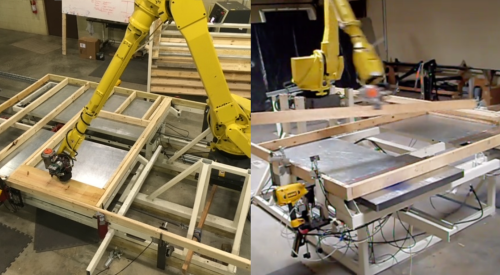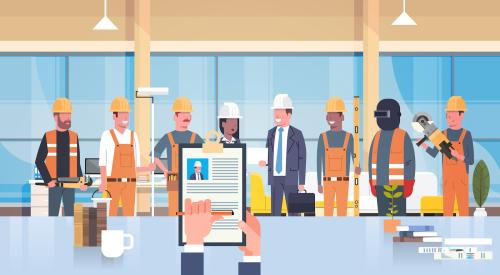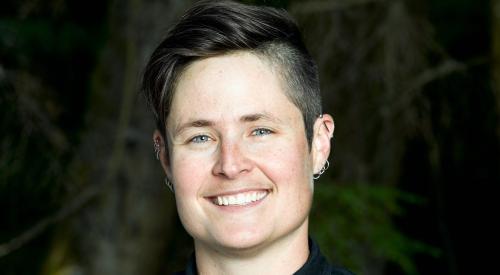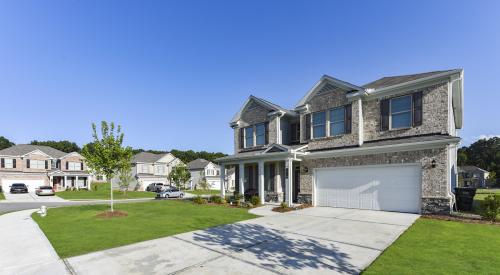“Builders tend not to be innovators,” said Douglas Gilliland, president of the Austin-based Taurus of Texas Holdings, a local partner of the global real estate investment firm Taurus Investment Holdings.
Few would contest that assessment. But there are reasons for that aversion to innovation—and ways that builders can get beyond it.
They came to light in conversations that Dennis Steigerwalt, president of the Housing Innovation Alliance, had last year with Gilliland as well as Brendan Fitzgerald, a New York City-based associate partner at McKinsey, and Walker Harris and Jeff Williams, cofounders of Williams Robotics, a North Carolina startup that’s created a robot that builds wall panels.
As they all made clear, innovation is not an option—particularly in light of the industry’s labor shortage. “The labor is just not there and it’s not coming back, so we’ve got to do something different,” Harris said. Innovative approaches, he added, will help the housing supply catch up with the growing demand.

There are promising signs of change. Venture capital for construction startups has at least doubled over the last five years, according to Fitzgerald. He pointed to new companies in modular construction, 3D printing and robotics. “After a long time where not much has happened, we’ve got the necessary conditions in place to really accelerate and drive the next wave of innovation.”
Still, plenty of problems have kept the industry from fully embracing innovation—with just as many potential solutions.
Problem: Pursuing innovation and maximizing ROI have been seen as two opposed pursuits for builders.
Facing tight margins, builders are understandably risk averse. They might see innovation, especially involving sustainability, as simply costing too much. “The challenge with sustainability has always been the cost it takes to comply versus what people are willing to pay for it,” Fitzgerald said.
Solution: Educate your homebuilding team, partners, and buyers.
In Austin, Taurus’s Whisper Valley community will include 7,500 net zero energy ready homes featuring solar panels and geothermal technology. Achieving that efficiency is one thing. Communicating its value to builders is another.
“Our biggest challenge is education,” Gilliland said. “The simplest message we communicate to builders is one they understand very well: We want to increase their margins and increase the number of units they sell.”
Homeowners need to be educated, too. “People don’t have visibility into what goes into the home,” Fitzgerald pointed out. So naturally, they wonder: Is sustainability worth any extra cost? “The education component is really important because people don’t necessarily know what to trust.”
Problem: The homebuilding industry’s fragmentation impedes innovation.
The industry has so many players: homebuilders, subcontractors, developers, product manufacturers. “There’s just a huge number of stakeholders, and they’re each used to doing things a certain way because it’s worked. So there’s a risk in changing and there’s risk aversion,” Fitzgerald said.
“Our industry is siloed,” Harris said. “We don’t want to share what we’re up to or what we’re thinking with anybody else.”
Solution: Builders should not go it alone.
The construction industry has a fragmented value chain, yes. But that means innovation can only truly be achieved through collaboration.
“You need to bring people along with you rather than driving it yourself,” Fitzgerald said.
For instance, Taurus brings together builders with product manufacturers, such as WaterFurnace, which produces geothermal pumps. Those partnerships achieve a scalability that makes the products more affordable.
Problem: The housing industry’s cyclical nature dictates business decisions.
“With the cyclical nature of our business, our highs are so high and our lows are so low, and the shift happens quickly,” Harris said. “When we’re at the top of the mountain, we’re wondering how we’re going to get all this stuff built and we don’t have time to think about innovation. On the other extreme, we’re at the bottom and we have plenty of time, but we’re scared about the future and our cashflow, so we hunker down and don’t innovate.”
Solution: Builders should aim for consistency with regard to innovation and investment in R&D.
“A lot of the big players in our industry allocate a lot of their capital and resources to the next development,” Harris says. “I understand that, but some of those resources could be allocated toward innovation.”
Problem: Homebuilders have been burned by innovation efforts in the past.
“As builders, we’ve all heard about the latest and greatest materials coming through the pipeline,” Harris said.
He recalled an example: “We went crazy using synthetic stucco in the ’90s, only to find out later it had a lot of moisture issues,” Harris said. “We’ve been burned by a lot of materials that cost us a lot of money.”
Solution: Think of homebuilding innovation as taking a journey, not catching a trend.
“Take a very practical lens to your product portfolio, your capabilities, and your customers, and pick the two or three areas where you should focus your innovation efforts,” Fitzgerald said. “If we see that labor shortage, especially skilled labor, will be an ongoing challenge for the industry, what can you do to solve that problem as it relates to your product portfolio?”
For product manufacturers, that solution might involve removing a couple of steps in the installation process or retooling the product so it fits into a modular builder’s production line.
“It’s about picking the areas of focus that align with your capabilities and with the larger trends—and treating it as a journey rather than the one product you’re going to do next,” Fitzgerald said.
Problem: Today is hard enough. Who can think about tomorrow?
Builders often must focus on day-to-day pressures—getting things done right, right now.
“The construction industry is really good at converting cheap land into expensive land by putting a house on it, but R&D is a whole different mindset,” Williams said. That mindset requires taking the long view to develop something new over time. “That’s uncomfortable for the folks who live construction day to day,” Williams said.
Solution: Weave forward-thinking innovation into the fabric of your homebuilding company culture.
Construction companies’ leaders will have “to create a culture where research and development can succeed,” Williams said. They must “convince the people doing research and development that failure is okay—okay to the point of necessary.”
Put another way: Don’t fall into paralysis by analysis. Take that first step; get out of your comfort zone.















